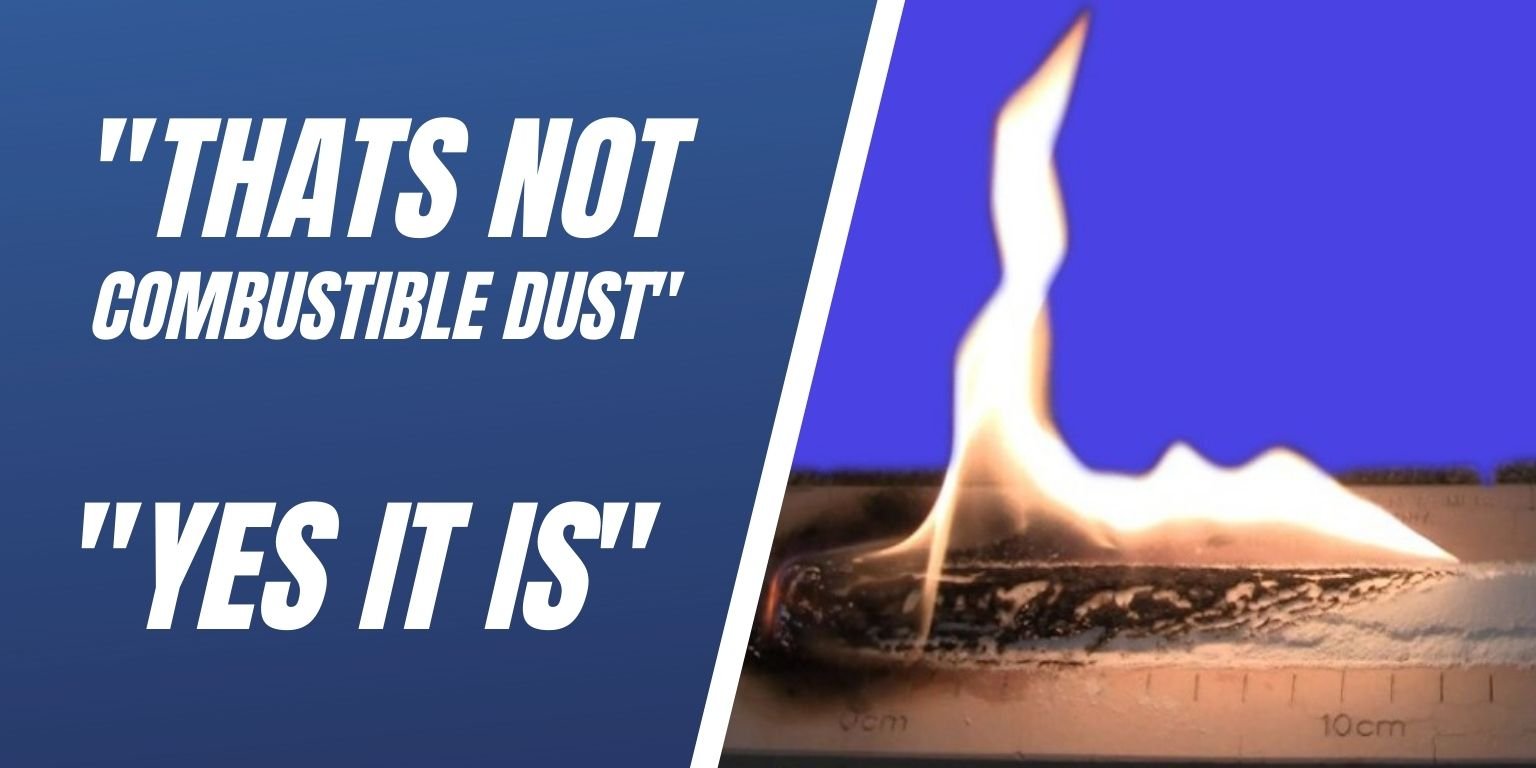
Manufacturing and production industries are at risk for combustible dust fires. It is a well known fact that many production processes create some kind of combustible dust that needs remediation. In manufacturing facilities, airborne dust particles (some toxic) may need combustible dust remediation. However, many facility managers and workers might think their dust isn't combustible.
“It’s just _______ dust, it’s not combustible”
We hear this a lot, only to have to let them know that in fact, the dust they thought was harmless is actually very combustible and is creating a hazard.
What Types of Dust are Combustible?
The most obvious one that most people are aware of being combustible dust is wood dust - usually just called saw dust. Lumber mills, furniture manufacturers, or other facilities that process wood create huge amounts of this highly explosive dust.
Another obvious type of combustible dust is textile dust such as cotton and nylon. Facilities that manufacture clothes or other textiles produce this lightweight but highly combustible dust.
What Types of Combustible Dust are Less Obvious?
The list of products and processes that produce combustible dust can be surprising. Certain items are obvious or are common culprits for fires and explosions. But, there are some things that seem so harmless when we use them it’s hard to believe that in certain stages, these things present a dangerous hazard
Food Processing Industry
One that had severe consequences was the food processing industry. In 2008 an explosion at the Imperial Sugar Refinery fatally injured 14 workers, and the explosion was determined to be caused by sugar dust. Sugar as well as cellulose, powdered milk, flour, starch, cocoa, and maltodextrin, among others, are combustible. Grain processing facilities are also particularly susceptible since they focus on drying out the grain, which creates large amounts of dry airborne dust - a major factor in a dust explosion hazard.
Plastics, Rubbers, and Resins
These materials are also highly combustible type of dust. These might seem like they wouldn’t be, or the dust would just melt without being combustible, but when mixed with the air to create a dust cloud these finely ground particles can become a dust explosion hazard. Any company that produces products with plastic, rubber, or resin is at risk. This can include tire manufacturers, plastic bottle and container plants, chemical manufacturers, recycling facilities, or any sort of household goods producer.
In 2016, the Lockport Recycling Plant in New York had rubber dust catch on fire and has been a struggle for firefighters to put out, despite multiple OSHA fines and suffering from a fire in 2012. It’s always frustrating when known issues are ignored, especially when those issues end up causing the same problems over and over.
Metals
The category that most people are amazed to find out is a type of combustible dust is metals. Metals typically don’t even burn as a solid, so it’s hard to believe that when ground up they become an explosion risk. Aluminum, iron, bronze, zinc and magnesium are all metals that become a combustion risk when found as dust. Yet, this is probably the type of dust that most people ignore and don’t consider dangerous.
A Michigan manufacturing plants experienced a combustible metal dust fire in March of 2017. The building was a foundry that made aluminum castings for the automotive industry, and the metal dust and oils from this process are believed to be what let the fire spread so quickly. The fire spread quickly to the other side of the 75,000 square foot building, and by the time firefighters arrived they realized the entire building would be a complete loss, and took a defensive stance in their firefighting.
Many times the greatest danger is the one that goes unnoticed, and combustible dust hazards are a severe danger that is often ignored. If you manage a production facility, knowing what dusts are combustible will help maintain code compliance and minimize potential fire risks.
Trusted Combustible Dust Remediation
Combustible dust cleaning should be performed ONLY by a certified and trained by standards set by the NFPA, NADCA, and OSHA. The certified combustible dust remediation contractor should have the proper industrial and commercial cleaning equipment, like intrinsically safe vacuums and grounded hoses.
Hughes Environmental has performed combustible dust cleaning in a wide array of facilities throughout the United States and has dealt with many types of combustible dust. Our technicians are trained, certified and up-to-date on common best practices. We have an OSHA trainer on staff, and our technicians have been through OSHA 10- or 30-hour training. We also have Council-certified Indoor Environmentalists (CIE) and Council-certified Microbial Remediators (CMR) on staff.
Call a Hughes professional at 888-845-3952 or Contact Us Here to set up a consultation and dust testing.

